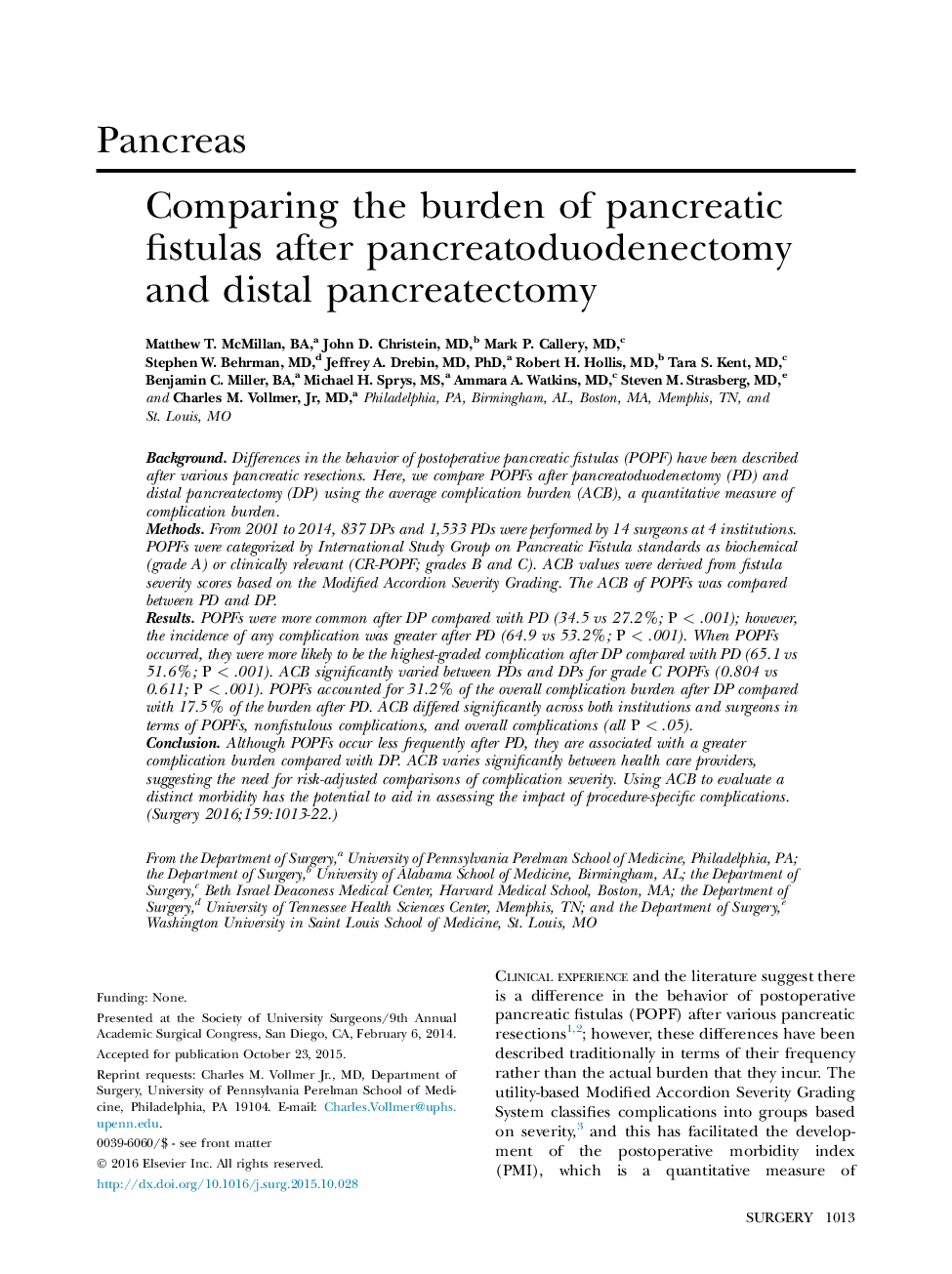| Article ID | Journal | Published Year | Pages | File Type |
|---|---|---|---|---|
| 4306491 | Surgery | 2016 | 10 Pages |
BackgroundDifferences in the behavior of postoperative pancreatic fistulas (POPF) have been described after various pancreatic resections. Here, we compare POPFs after pancreatoduodenectomy (PD) and distal pancreatectomy (DP) using the average complication burden (ACB), a quantitative measure of complication burden.MethodsFrom 2001 to 2014, 837 DPs and 1,533 PDs were performed by 14 surgeons at 4 institutions. POPFs were categorized by International Study Group on Pancreatic Fistula standards as biochemical (grade A) or clinically relevant (CR-POPF; grades B and C). ACB values were derived from fistula severity scores based on the Modified Accordion Severity Grading. The ACB of POPFs was compared between PD and DP.ResultsPOPFs were more common after DP compared with PD (34.5 vs 27.2%; P < .001); however, the incidence of any complication was greater after PD (64.9 vs 53.2%; P < .001). When POPFs occurred, they were more likely to be the highest-graded complication after DP compared with PD (65.1 vs 51.6%; P < .001). ACB significantly varied between PDs and DPs for grade C POPFs (0.804 vs 0.611; P < .001). POPFs accounted for 31.2% of the overall complication burden after DP compared with 17.5% of the burden after PD. ACB differed significantly across both institutions and surgeons in terms of POPFs, nonfistulous complications, and overall complications (all P < .05).ConclusionAlthough POPFs occur less frequently after PD, they are associated with a greater complication burden compared with DP. ACB varies significantly between health care providers, suggesting the need for risk-adjusted comparisons of complication severity. Using ACB to evaluate a distinct morbidity has the potential to aid in assessing the impact of procedure-specific complications.
